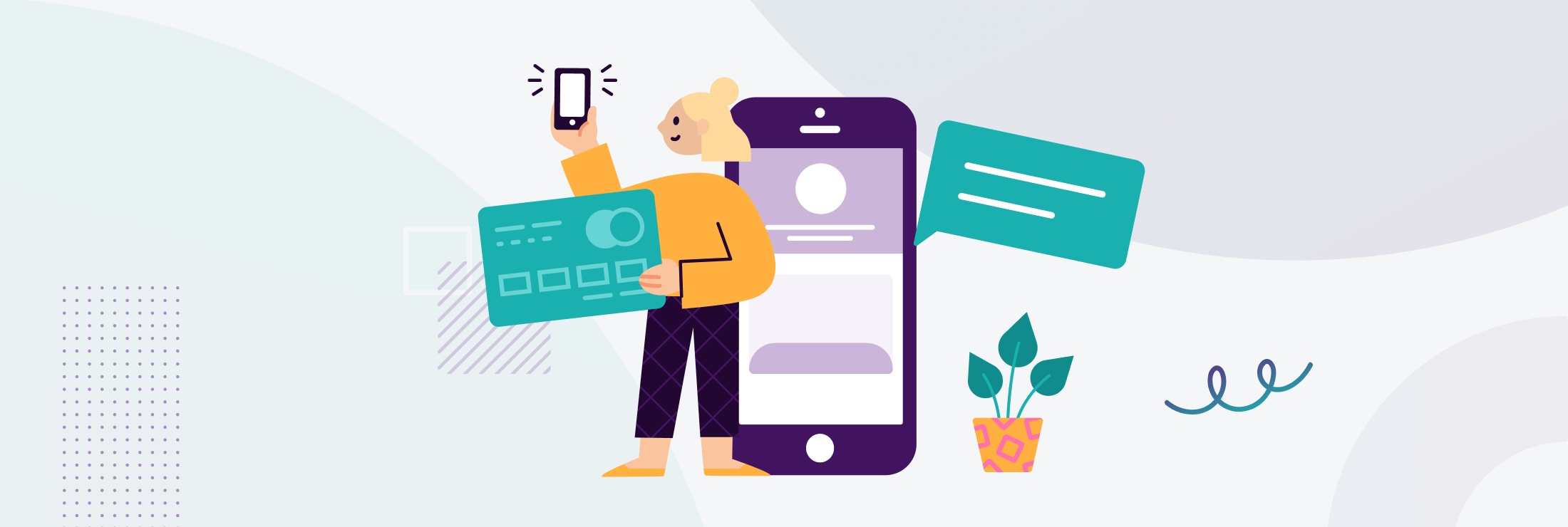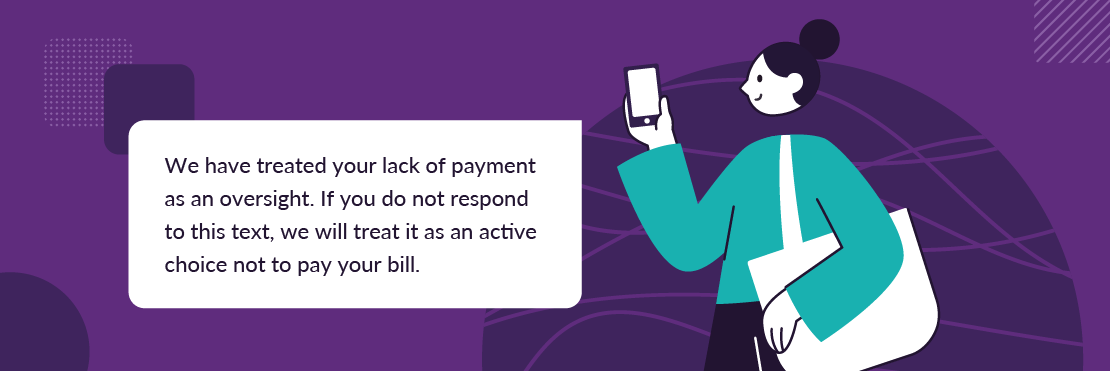
The Esendex team take a deeper dive into why less is more when designing a mobile landing page that converts. Keep reading to find out how to take your customer conversion rate to new heights…
A mobile landing page is a web page that’s designed for mobile browsers.
Esendex offer mobile journeys, which are a series of landing pages that will guide customers towards a particular call-to-action. The best performing mobile journeys are the ones that grab attention, have a clear goal and push people towards a particular action.
Here are some tips to help you craft one that converts.
- Design specifically for mobile
- Have a single goal and guide people towards the call-to-action
- Make the most of white space
- Keep it short
1. Design specifically for mobile
Just because your desktop landing page works on mobile devices as well doesn’t mean that you shouldn’t have landing pages designed specifically for mobile. People interact with websites differently on mobile compared to desktop.
For example, here’s a comparison of how Paypal’s home page looks on desktop and mobile:
Desktop version:
Mobile version:
Both are simple, yet there are features that set them apart (aside from the page layout) – such as the QR code on the desktop version and the CTA button to ‘get the app’ on mobile.
Map out your customer journey and create your landing page and communication strategy based on the device your customer is likely to be using.
2. Have a single goal and guide people towards a call-to-action
Avoid confusion and boost conversions with a single call to action. This means each landing page in this journey should guide users towards a specific goal, whether that’s making a payment or collecting feedback.
This helps to reduce the number of on-page distractions and minimises barriers. So, not only does it boost the likelihood of customers completing the desired action, but it also improves the speed at which they do it.
3. Make the most of white space
When it comes to design, less is more. Prioritise simplicity as this can help ensure your call-to-action is clearly visible.
This tip applies for all kinds of landing pages but especially for mobile where you’re working with a small screen. You may even be competing with more distractions (e.g. app notifications and the fact that people may be on-the-go when they enter the mobile journey). So, it’s important that your mobile landing pages are eye-catching, memorable and straight to the point.
4. Keep it short
From snappy, concise copy to a condensed (but still valuable) journey, high performing mobile journeys are short. Customers who are accessing mobile journeys are likely to be on-the-go. So, make it quicker and easier for them to finish the journey. This will help boost your conversion rate.
For example, instead of a survey sent via a series of SMS messages, why not send a link to a mobile journey which covers all of the questions on a web page? This page can be branded, contain various elements like buttons, sliders and drop down options to boost user experience and more.
Work with a communications partner and take conversion to new heights
Mobile journeys get customers from A to B in the fastest and easiest way possible. When implemented properly, a mobile journey can see higher conversion rates compared to a traditional website.
Get the most out of your mobile journeys when you work with a communication partner. At Esendex, we have been helping businesses like yours for more than 20 years to transform their customer comms strategies.
When it comes to mobile journeys, we can help you discover the art of the possible. Here are some ways you can use this product to convert more of your customers’ journeys:
- Collections and payments – allow customers to verify their identity before proceeding to the branded mobile journey which will guide users to make a payment, change their details, amend their payment plan and more.
- Surveys – via buttons, sliders and free type fields, use mobile journeys to deliver surveys in a more engaging way.
- Appointment management – when integrated with your booking system, customers can change their appointment times/dates which not only gives them more autonomy but also frees up your switchboard.
- Meter readings – send customers a text with a link to a mobile journey. They can validate their identity and then can enter the details of their meter reading – no need to wait on hold to speak to a call centre agent!
Want to dive deeper into the world of mobile journeys? Check out our webinar where we discuss how businesses can craft digital destinations that leave a lasting impact on their customers.
Or, get in touch with us today to find out more.



